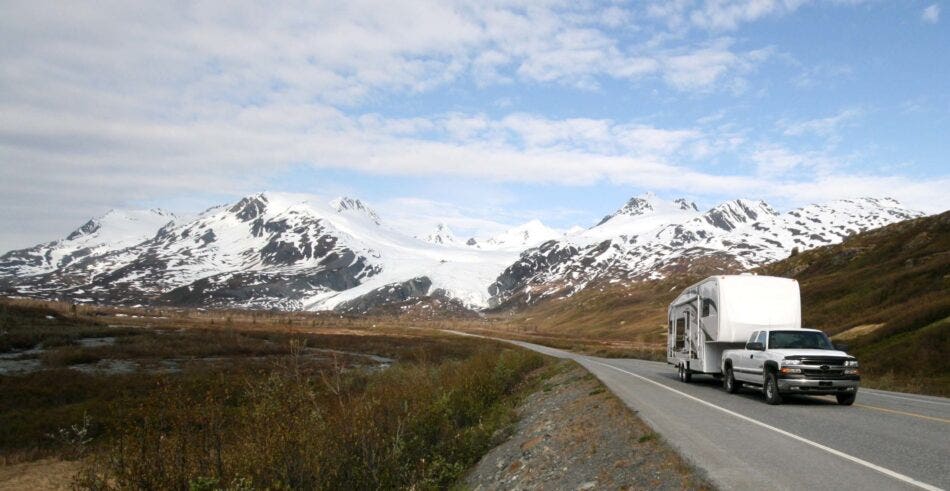For many Canadians their RV is a ticket to freedom – the freedom to spend a weekend at a favourite spot take an extended summer road trip or even live in their RV full time. What all these RVers have in common is the need for proper insurance to cover them in the event of damage or losses while they are using their vehicle. The cost of RV insurance varies considerably so it’s important to know which elements of the cost are unavoidable which are optional and the degree to which each factor affects the overall cost of RV insurance.
What Impacts RV Insurance Premiums
1. Make model and year.
The make model and year affect the value of your RV as well as the coverage options available to you. The newer your RV is and the more features the model has the more expensive it is to insure because it will cost more to replace. The year also determines if you are eligible for “replacement cost” coverage or “actual cash value” coverage: the cost of buying a new unit or the cost of what your RV would fetch on the market today respectively.
2. Insurance history and driving history.
Just as with any kind of insurance a history of frequent claims and coverage gaps can land you in the high-risk category and lead to significantly higher premiums.
In the case of motorhomes the history of any driver named on the policy will be taken into account by your insurer. A history of driving infractions can also push you into the high-risk category. Insurers take into account frequency of tickets and accidents as well as the seriousness. A poor driving record may well push premiums beyond what most people would consider affordable.
3. Actual cash value vs guaranteed replacement cost.
With comprehensive RV insurance policies you will have to decide whether you want to be covered up to an agreed market value for your vehicle (actual cash value) or whether you want to be covered for the cost of replacing your vehicle regardless of its market value (guaranteed replacement cost coverage). The latter is only available for newer RVs and will come with higher premiums but you will receive more in the event of an insured loss. Another thing to keep in mind is that actual cash value coverage will reduce over time as the value of your RV depreciates.
4. Additional coverage and increased limits.
Making additions to your policy or increasing limits to cover more possible losses will obviously add to the cost of your premiums. These can include:
- Full-timer Liability – If you live in your RV full time this is a policy add-on that covers guests and visitors in the same way as homeowner’s liability insurance. This will permanently increase the cost of your premiums.
- Increased limits – if the basic limits of your policy aren’t enough to replace your contents in the event of a claim you can raise them to ensure they’re covered.
- Emergency vacation expense – this covers your living expenses including accommodation and food in the event your RV has to be repaired while you’re on vacation. While a basic amount is automatically included in your policy you can raise this if you’re worried about covering expenses if your RV breaks down.
- Roadside Service – you can choose to upgrade your roadside services package to include greater mileage and perks. You can learn more here .
- Outdoorsy RV Rental – rent your RV with peace of mind through Outdoorsy – your personal policy will not be affected. You can learn more about how this works here .
- Outbuilding coverage – you can increase your policy limits to better reflect the value of your outbuildings such as decks and sheds.
These are just a few choices you can make to extend your coverage at the expense of a higher premium.
5. Deductibles.
A deductible is the amount you pay in the event of a claim. The lower your deductible the higher your premium as that’s more the insurance company has to pay out. If you can afford it (and especially if you use your RV less often) you may benefit from choosing a higher deductible such as $1000 or $2500.
6. How much you drive and where you go.
The number of kilometres you put on your motorhome matters. The more you drive the more risk you’re taking. That will translate into higher insurance premiums.
Your destination can also affect your insurance. If you plan on heading to the US particularly for longer than 3 months you may see an increase in your premiums regardless of if you’re in a motorhome or a travel trailer.
7. Discounts.
Thankfully there are also a number of discounts available:
- Bundled Insurance: If you bundle your RV insurance with your home or car insurance (meaning insure it with the same insurance company) you’ll receive a discount.
- Club: Certain club memberships can get you a small discount on your insurance rates.
- Claims Free: If you have a history of claims-free RV insurance you may be eligible for a discounted rate.
Insurance companies may offer additional discounts as few are the same. Don’t be afraid to talk to your broker about what’s available to you!
Your insurance broker is the best person to get you an accurate quote and explain pricing to you. They can help you make the right decisions when it comes to getting the coverage you need for an affordable price.

